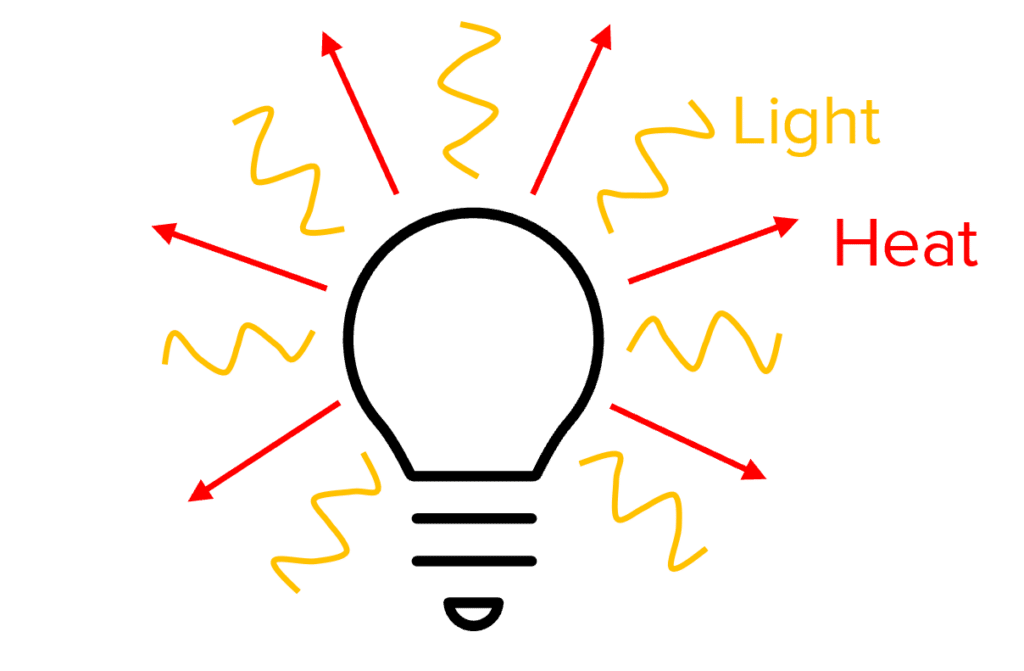Efficiency
Efficiency Revision
Efficiency
Efficiency tells us how much energy is transferred to useful energy and how much energy is wasted. By reducing wasted energy, the efficiency of an energy transfer can be increased. This will save energy and money.
Efficiency Calculations
If you know the amount of input energy and useful energy from an energy transfer, you can calculate the efficiency using the following equation:
\color{aa57ff}{\text{efficiency}} \color{aa57ff}{=}\color{aa57ff}{\dfrac{\text{useful output energy}}{\text{total input energy}}}
Remember that the total energy is equal to the sum of the useful energy and the wasted energy.
\color{aa57ff}{\text{total energy}}\color{aa57ff}{=}\color{aa57ff}{\text{useful energy} + }\color{aa57ff}{\text{wasted energy}}
You can also calculate efficiency using the total power input and the useful power input using the following equation:
\color{aa57ff}{\text{efficiency}}\color{aa57ff}{=} \color{aa57ff}{\dfrac{\text{useful power output}}{\text{total power input}}}
Increasing Efficiency
The efficiency of an energy transfer can be increased by reducing the amount of wasted energy. How we do this depends on the system and the types of energy store involved.
For example, by using oil as a lubricant in a car engine, less heat is produced by friction. Therefore, less energy is wasted as heat and so more energy is converted to useful energy and the engine is more efficient.
We always want to make a process more efficient because this will save energy and money.
Example: Calculating Efficiency

A lightbulb is switched on for a period of time. During this time, the lightbulb uses 100\text{ J} of energy and 20\text{ J} of heat energy is produced by the lightbulb.
Calculate the efficiency of the lightbulb.
[3 marks]
Efficiency Example Questions
Question 1: An electric motor has a power rating of 6\text{ W} but it only produces kinetic energy at a rate of 4\text{ W}. What is the efficiency of the motor?
[2 marks]
Question 2: In an energy transfer, 30\% of the energy input is wasted. What is the efficiency of the energy transfer?
[1 mark]
Question 3: Suggest a way to improve the efficiency of a kettle.
[1 mark]
Any one from:
- Increase the thickness of the walls of the kettle
- Make the kettle from a more insulating material
- Wrap the kettle in an insulating material (cotton wool, bubble wrap etc).
Efficiency Worksheet and Example Questions
Energy Changes in a System Questions
GCSEOfficial MME
MME Premium Membership
£19.99
/monthLearn an entire GCSE course for maths, English and science on the most comprehensive online learning platform. With revision explainer videos & notes, practice questions, topic tests and full mock exams for each topic on every course, it’s easy to Learn and Revise with the MME Learning Portal.
Sign Up Now




